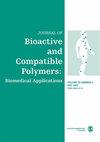波洛沙姆基贝西沙星热敏原位胶凝纳米乳的制备
IF 2.1
4区 生物学
Q3 BIOTECHNOLOGY & APPLIED MICROBIOLOGY
引用次数: 0
摘要
本研究旨在开发和研究贝西沙星(BSF)由两种亲水性聚合物,即poloxam407 (P407)和poloxam188 (P188)组成的原位凝胶纳米乳(NEs),用于眼部给药。采用自发乳化法制备了含有三乙酸素(油)、Cremophor®RH 40(表面活性剂)、Transcutol®P(助表面活性剂)、poloxam407和poloxam188(胶凝剂)的原位凝胶- nes。根据凝胶温度选择最佳的原位凝胶纳米乳。对选定的配方进行了物理化学特性评估,包括液滴大小、折射率、pH值、透明度和粘度。进一步进行了体外药物释放、体外角膜渗透、et - cam、角膜前停留时间抗菌效果研究。制备的BSF原位凝胶纳米乳具有良好的物理化学性质,纳米液滴尺寸为19 nm, PDI为0.21。此外,体外释放研究表明,原位凝胶制剂可以维持药物释放,仅40%的BSF在1小时内释放。BSF在6 h内通过牛角膜的渗透系数(Papp)为6.01 × 10−6 cm/s。此外,HET-CAM评价证实了最佳BSF原位凝胶NEs的无刺激性。角膜前停留时间评估表明,原位凝胶- nes在眼表面的滞留时间延长。最后,对铜绿假单胞菌和金黄色葡萄球菌进行了药敏试验。目前的研究结果表明,这种bsf负载的原位凝胶- nes可以被认为是一种潜在的抗眼部细菌感染的新型药物递送制剂。本文章由计算机程序翻译,如有差异,请以英文原文为准。
Fabrication of poloxamer based besifloxacin thermosensitive in situ gelling nanoemulsions for ophthalmic delivery
The present study aimed to develop and investigate besifloxacin (BSF) in situ gel nanoemulsions (NEs) consisting of two hydrophilic polymers, that is, poloxamer 407 (P407) and poloxamer 188 (P188), for ocular delivery. BSF loaded in situ gel-NEs containing triacetin (oil), Cremophor®RH 40 (surfactant), Transcutol®P (co-surfactant), poloxamer 407 and poloxamer 188 (gelling agents) were prepared by spontaneous emulsification method. The optimum in situ gel nanoemulsion was selected based on gelation temperature. The selected formulation was evaluated for physicochemical characteristics, including droplet size, refractive index, pH, transparency, and viscosity. Further investigations such as in vitro drug release, ex vivo corneal permeation, HET-CAM, pre-corneal residence time antibacterial efficacy studies were conducted too. Developed BSF in situ gel nanoemulsion showed acceptable physicochemical properties with a nano-metric droplet size of 19 nm and PDI of 0.21. Moreover, In vitro release studies revealed that the in situ gel formulation could sustain drug release as only 40% of the BSF was released within 1 h. Permeability coefficient (Papp) of BSF through the excised bovine cornea was found 6.01 × 10−6 cm/s during 6 h. In addition, the HET-CAM evaluation confirmed the non-irritancy of the optimum BSF in situ gel NEs. The pre-corneal residence time evaluation indicated prolonged retention of in situ gel-NEs on the eye surface. Finally, antibacterial susceptibility investigations illustrated remarkable efficacy against Pseudomonas aeruginosa and Staphylococcus aureus. The current findings demonstrated that this proposed BSF-loaded in situ gel-NEs could be considered as a potential novel drug delivery formulation against ophthalmic bacterial infections.
求助全文
通过发布文献求助,成功后即可免费获取论文全文。
去求助
来源期刊

Journal of Bioactive and Compatible Polymers
工程技术-材料科学:生物材料
CiteScore
3.50
自引率
0.00%
发文量
27
审稿时长
2 months
期刊介绍:
The use and importance of biomedical polymers, especially in pharmacology, is growing rapidly. The Journal of Bioactive and Compatible Polymers is a fully peer-reviewed scholarly journal that provides biomedical polymer scientists and researchers with new information on important advances in this field. Examples of specific areas of interest to the journal include: polymeric drugs and drug design; polymeric functionalization and structures related to biological activity or compatibility; natural polymer modification to achieve specific biological activity or compatibility; enzyme modelling by polymers; membranes for biological use; liposome stabilization and cell modeling. This journal is a member of the Committee on Publication Ethics (COPE).
 求助内容:
求助内容: 应助结果提醒方式:
应助结果提醒方式:


